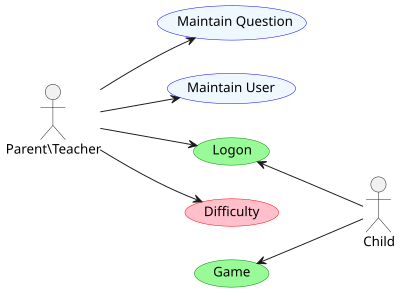
Back Akteur (UML) German Actor (UML) Spanish کنشگر (یوامال) Persian Käyttäjärooli (UML) Finnish Acteur (UML) French Szereplő (UML) Hungarian Aktor (UML) Polish Ator (UML) Portuguese Актор (UML) Russian Aktorët (UML) Albanian

An actor[1] in the Unified Modeling Language (UML) "specifies a role played by a user or any other system that interacts with the subject."[1]
"An Actor models a type of role played by an entity that interacts with the subject (e.g., by exchanging signals and data), but which is external to the subject."[2]
"Actors may represent roles played by human users, external hardware, or other subjects. Actors do not necessarily represent specific physical entities but merely particular facets (i.e., “roles”) of some entities that are relevant to the specification of its associated use cases. A single physical instance may play the role of several different actors and a given actor may be played by multiple different instances."[2]
UML 2 does not permit associations between Actors.[2][3] The use of generalization/specialization relationship between actors is useful in modeling overlapping behaviours between actors and does not violate this constraint since a generalization relation is not a type of association.[4]
Actors interact with use cases.
- ^ a b "Actor". Unified Modeling Language 2.5.1. OMG Document Number formal/2017-12-05. Object Management Group Standards Development Organization (OMG SDO). December 2017. p. 647.
- ^ a b c "OMG Unified Modeling Language (OMG UML), Superstructure, V2.1.2, pp. 586–588". Archived from the original on 2010-09-23. Retrieved November 7, 2010.
- ^ "Problems and Deficiencies of UML as a Requirements Specification, s.3.2" (PDF). Archived (PDF) from the original on 17 October 2010. Retrieved November 7, 2010.
- ^ "UML 2 Specification". Retrieved July 4, 2012.